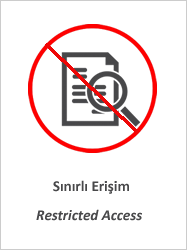Microsurgical training model for residents to approach to the orbit and the optic nerve in fresh cadaveric sheep cranium.

Göster/
Erişim
info:eu-repo/semantics/openAccessTarih
2014Yazar
Altunrende, M. EmreHamamcıoğlu, Mustafa Kemal
Hiçdönmez, Tufan
Akçakaya, Mehmet Osman
Birgili, Barış
Çobanoğlu, Sebahattin
Üst veri
Tüm öğe kaydını gösterKünye
Altunrende ME, Hamamcioglu MK, Hicdonmez T, Akcakaya MO, Birgili B, Cobanoglu S. Microsurgical training model for residents to approach to the orbit and the optic nerve in fresh cadaveric sheep cranium. Journal of Neurosciences in Rural Practice. 2014; 5(2): 151-154. doi: 10.4103/0976-3147.131660.Özet
BACKGROUND:
Neurosurgery and ophthalmology residents need many years to improve microsurgical skills. Laboratory training models are very important for developing surgical skills before clinical application of microsurgery. A simple simulation model is needed for residents to learn how to handle microsurgical instruments and to perform safe dissection of intracranial or intraorbital nerves, vessels, and other structures.
MATERIALS AND METHODS:
The simulation material consists of a one-year-old fresh cadaveric sheep cranium. Two parts (Part 1 and Part 2) were designed to approach structures of the orbit. Part 1 consisted of a 2-step approach to dissect intraorbital structures, and Part 2 consisted of a 3-stepapproach to dissect the optic nerve intracranially.
RESULTS:
The model simulates standard microsurgical techniques using a variety of approaches to structures in and around the orbit and the optic nerve.
CONCLUSIONS:
This laboratory training model enables trainees to gain experience with an operating microscope, microsurgical instruments and orbital structures.
Kaynak
Journal of Neurosciences in Rural PracticeCilt
5Sayı
2Bağlantı
http://www.ruralneuropractice.com/temp/JNeurosciRuralPract52151-3192985_085209.pdfhttps://hdl.handle.net/11446/660

















